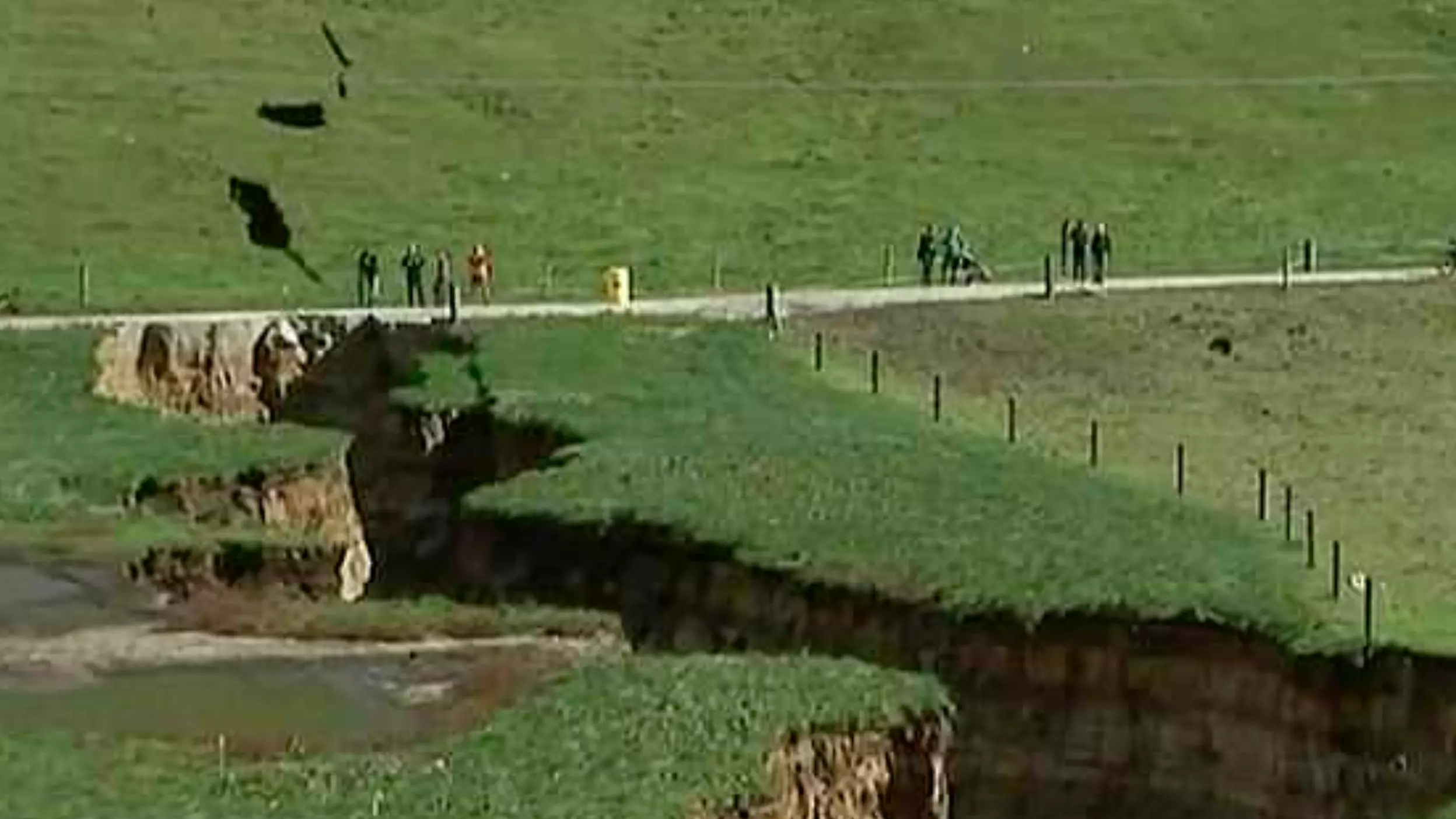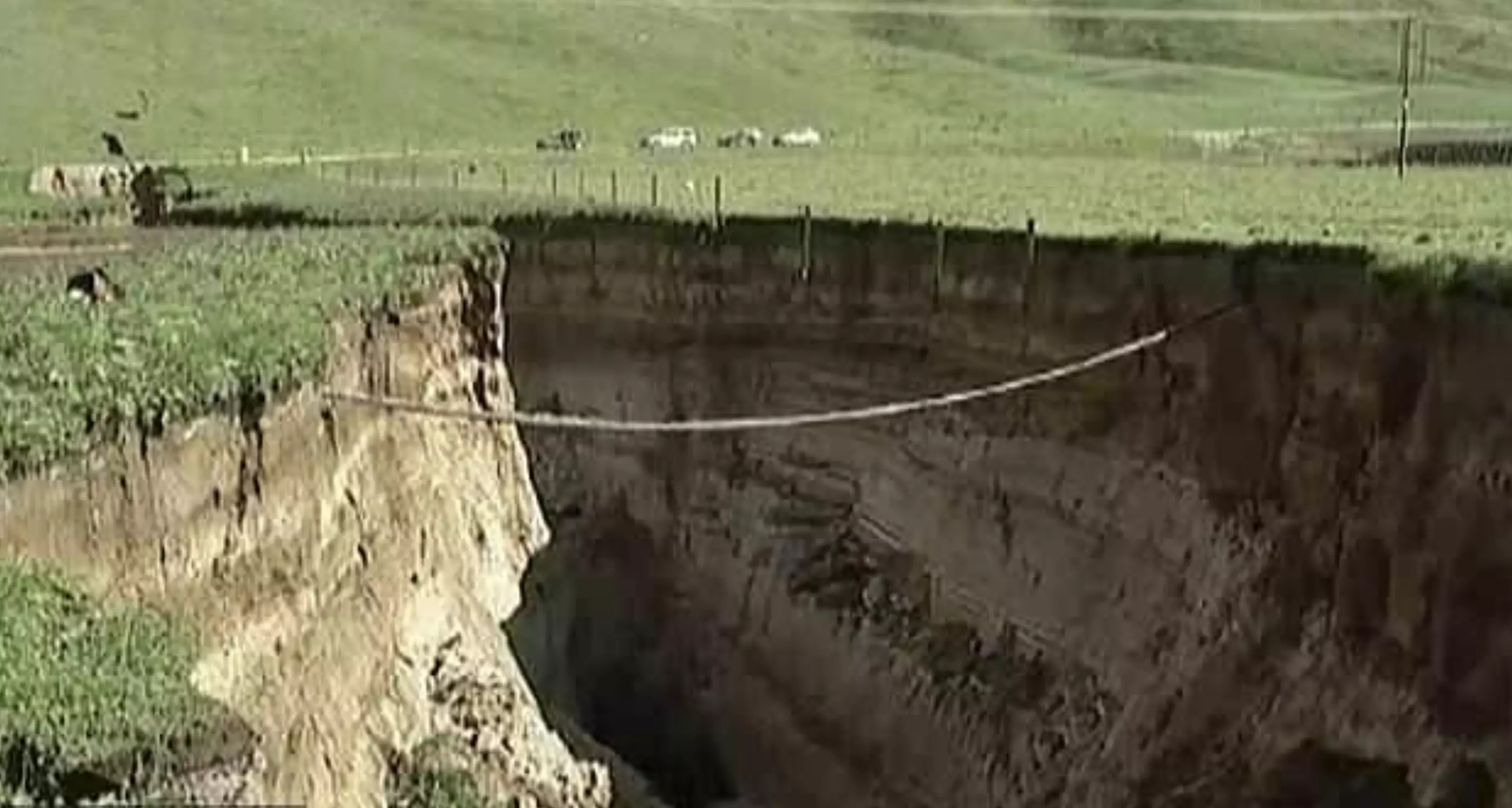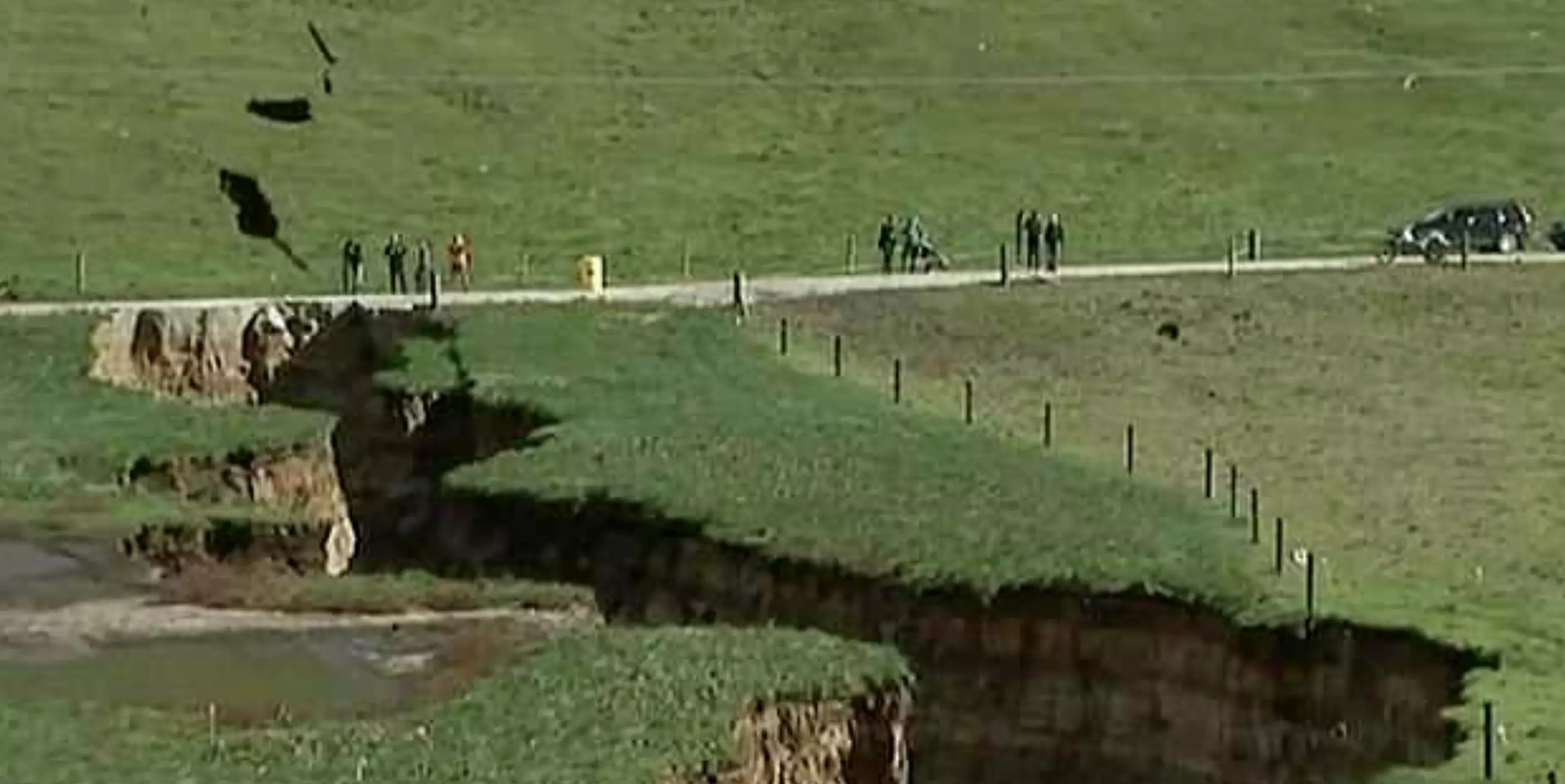
A massive sinkhole has formed at a farm in New Zealand and is thought to be the largest in the country.
The mammoth opening has torn its way through farmland in the country's North Island, revealing a great, big trench, measuring more than the length of two football fields and deeper than a six-storey building.
The sinkhole, situated about 15 kilometres south-east of the city of Rotorua in a region called Earthquake Flat, is estimated to have taken a century to form.

"The largest I've seen prior to this would be about a third of the size of this, so this is really big," volcanologist Brad Scott from Kiwi geoscience firm GNS Science told AP.
A farm assistant became the first to discover the colossal trench while rounding up cows for milking before the sun came up. He only narrowly avoided riding into it on his motorbike.
The farmer is planning to erect a fence around the sinkhole, in order to keep his cows from falling into it.
"It wasn't until I came down in daylight that I actually saw just how big it was," said farm manager Colin Tremain.
"We'll keep it fenced off as it is to keep stock out, although stock aren't stupid, they're not going to walk into a hole, they can spot danger."

Scott believes that the sinkhole could have been forming for up to 100 years, after decades of rainfall slowly eroded the farm's limestone foundations.
The catalyst was most likely a period of intense rainfall that hit the area at the end of April. However, while it may be treacherous for cows, the sinkhole does offer up some interesting information for geologists.
"What I see in the bottom of this hole is the original 60,000-year-old volcanic deposit that came out of this crater," Scott told TVNZ.
"Then there's a stack of about 10 to 12 metres of sediment sitting on top of it from lakes that have formed in this crater. The top three metres is volcanic ash."
The opening will be enough to keep volcanologists and geologists occupied over the coming weeks and months as they inspect it and see what they can learn.
Featured Image Credit: PATopics: New Zealand, World News